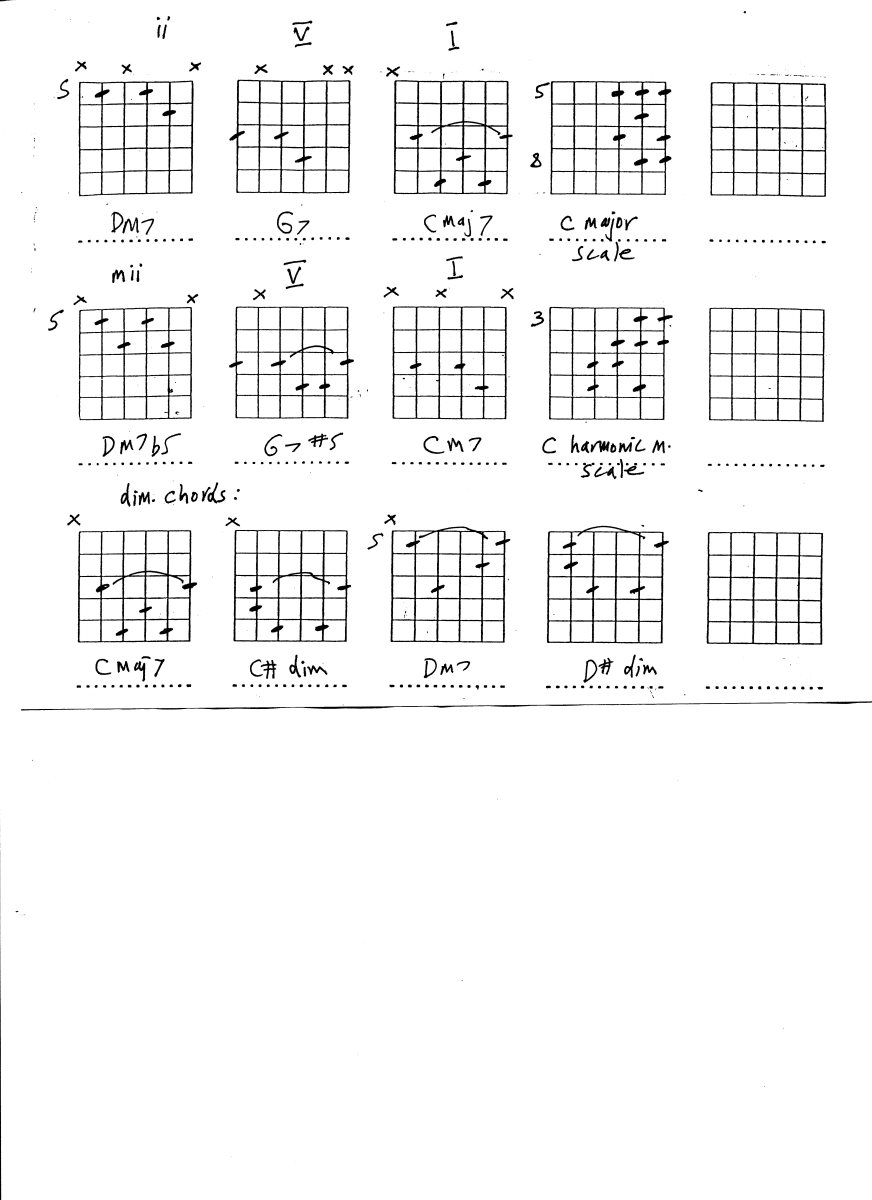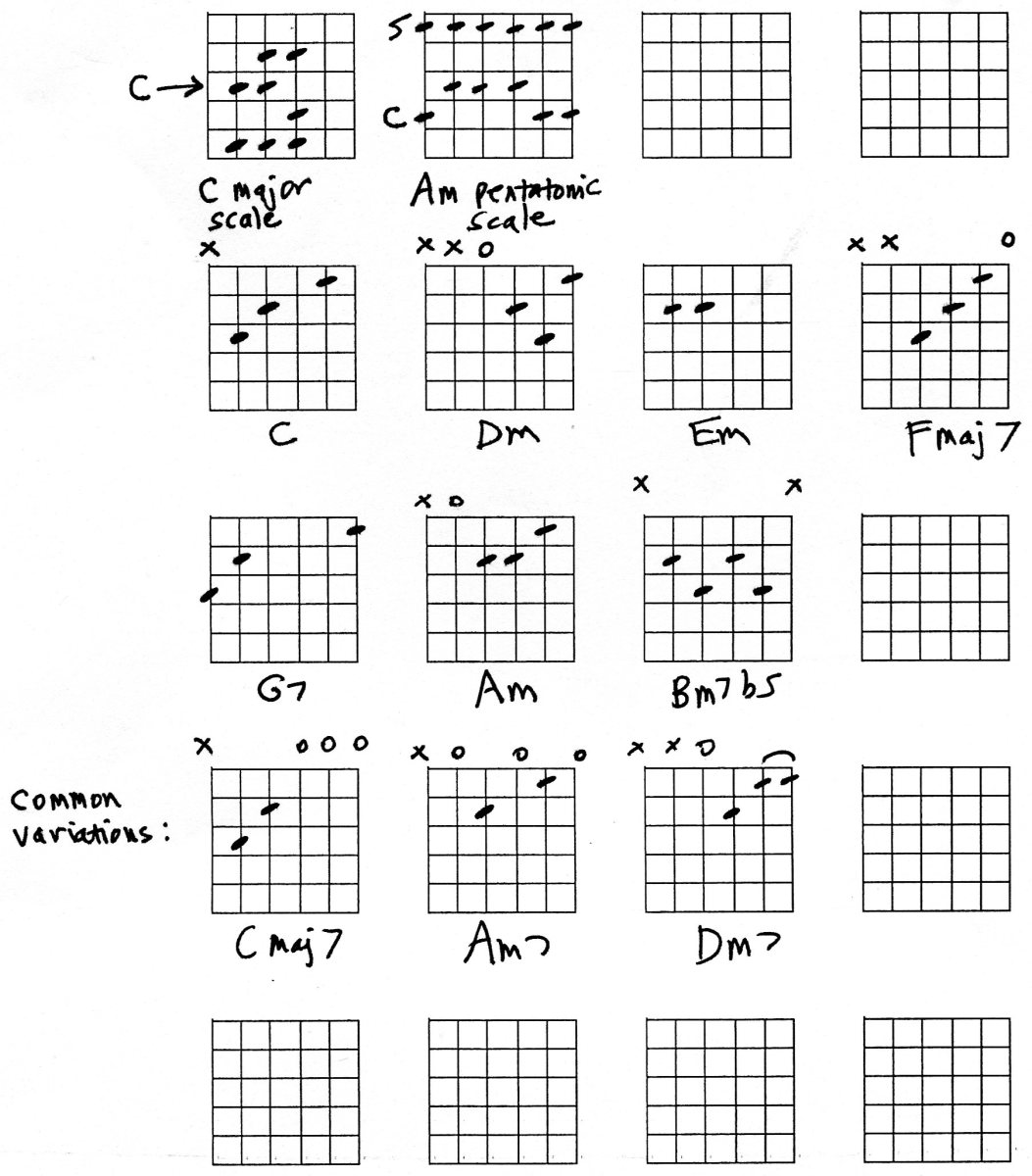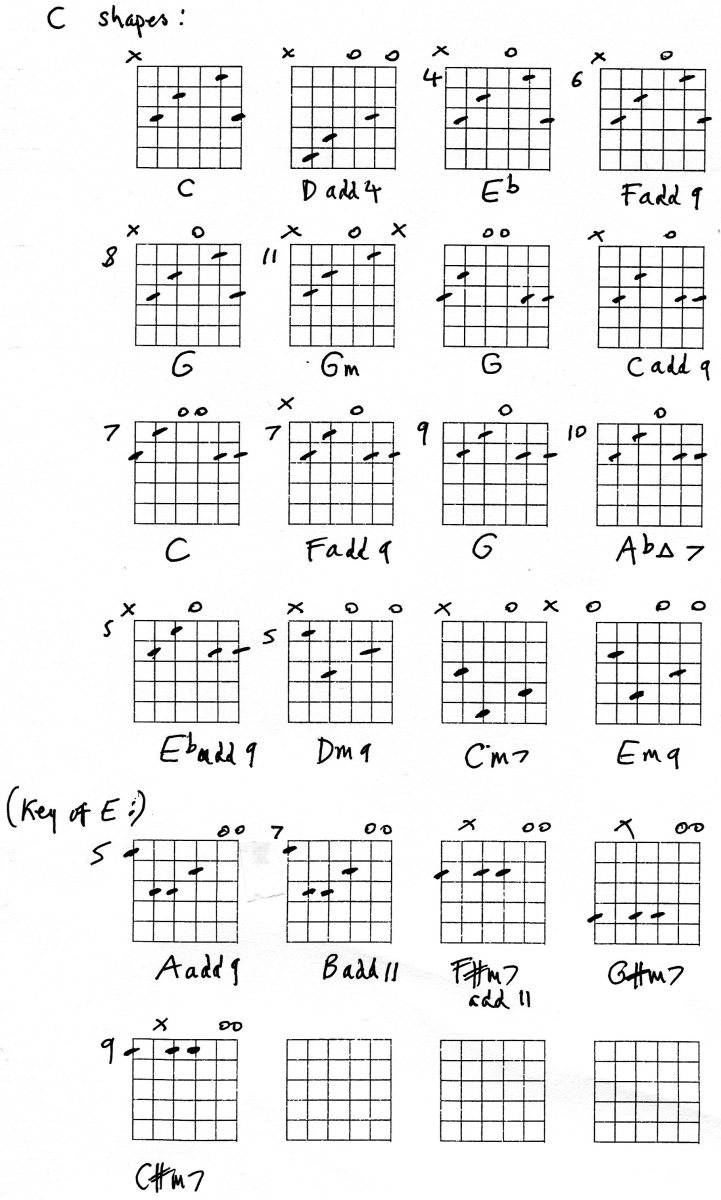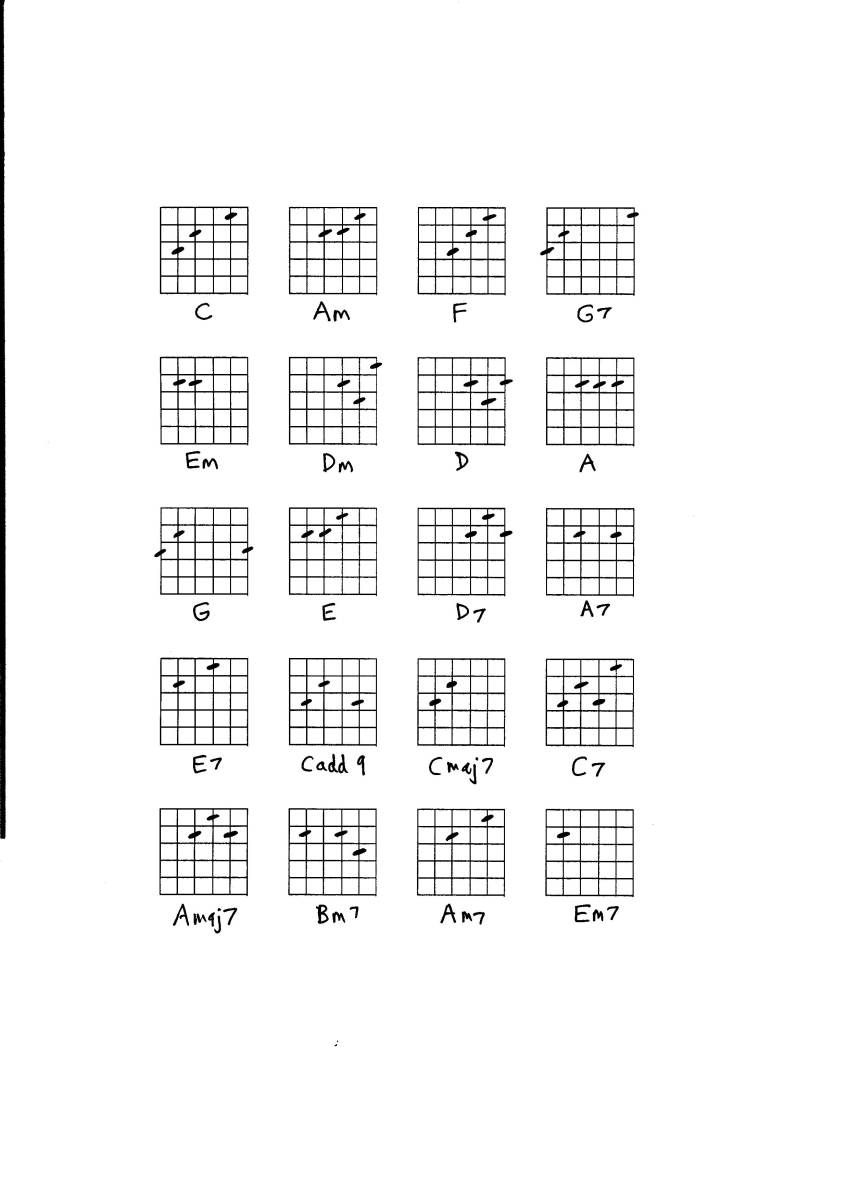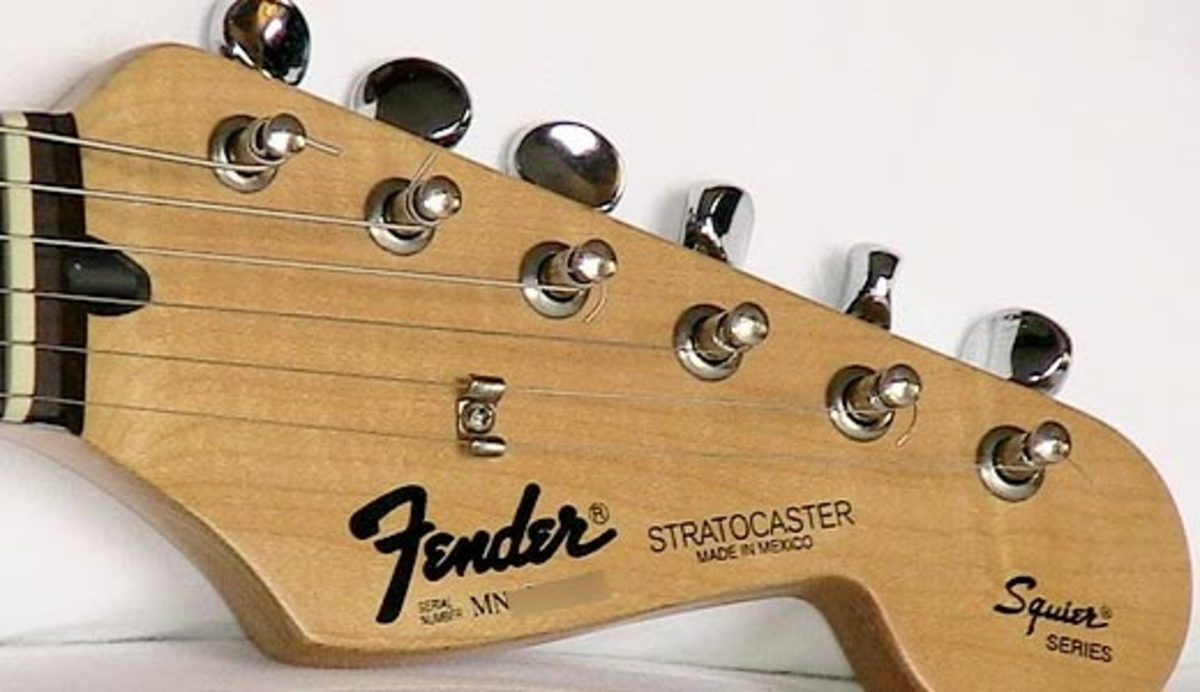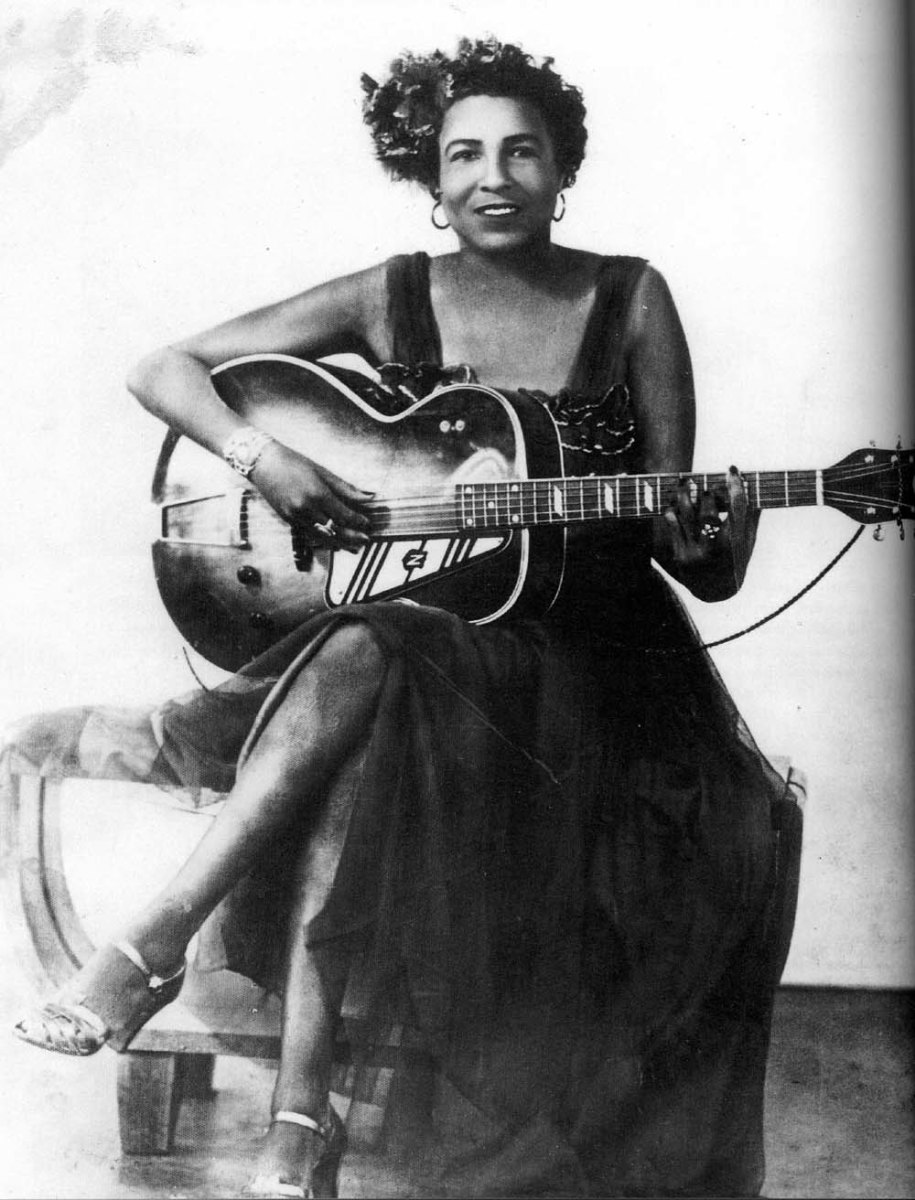Very Easy Guitar Chords
How to play guitar songs
I'm calling this jon's guitar method in honour of its inventor, me. You too can be a Guitar God in just the time it takes you to read this, assuming that you are a very, very slow reader!
The examples are left to right, and the chord chart at the bottom shows you the best way to practice them. Also, it starts easy and gets progressively more difficult. For more info on this, click on the "read more hubs by..." under the photo and look at Guitar Chords 101 or How to play guitar songs.
Reading chord boxes:
The chord grids are shown with the six strings as the vertical lines, the frets are horizontal. The headstock would be at the top of the grid, your thumb would be on the left of it. The thickest string (E) is the vertical line on the left, the thinnest string (also E) is the line on the right.
x means: don't play this string, 0 is open string.
- Rhythm - the chords are shown in bars, the vertical lines represent one bar. Strum four times for each bar, very slowly at first.
Jon's guitar method
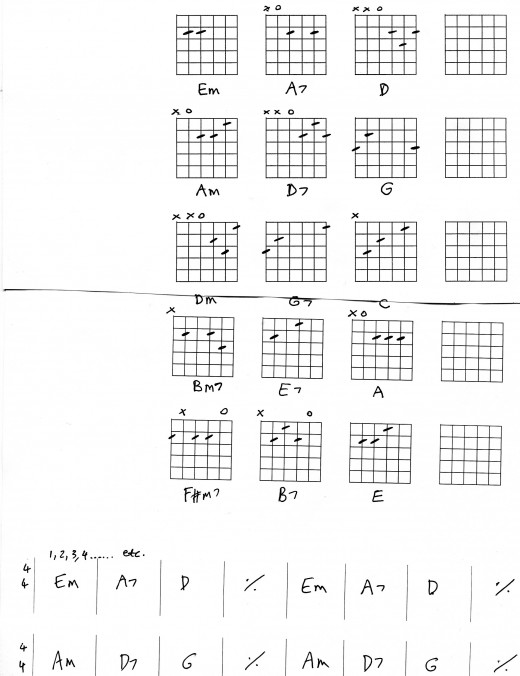
Theory
The chords you find in any song are not random, they are always related and the concept that makes them work together is known as a key.
I've taken some of the most common keys for guitar, C, A, G, E, D and shown the 2-5-1 chords for each key. This is because 5-1 and 2-5-1 are the most common and useful chord progressions found in playing guitar songs, in most styles such as rock, pop, ballads,country and jazz. More correctly, these are ii V I progressions as Roman numerals are used.
Chords in the key of C are
C Dm Em F G Am Bm7♭5 C
in D they are:
D Em F♯m G A Bm C♯m7♭5 D
This is exactly the same sequence of chords, just moved up two semitones, or 2 frets on the guitar. All the other keys work in the same way. You will see this described as a harmonised scale or diatonic chords, much the same thing.
Number these 1 to 8, and you'll see chords 2,5 and 1 from each set of chords are the ones we're using here. Try to understand this, because it is unbelievably useful for all guitar players and musicians in general. Virtually every song from the traditional songwriting era from 1930s to 1960s will use this chord progression at some point in the song.
Guitar songs
The more guitar songs you play, the more you will realise that these chords are pretty much universal, and just being familiar with them should speed up the process of learning songs. it is always a good idea to memorize this material rather than reading it.
Now let's just look at the last 2 chords in each sequence, the 5 -1 (or V-I). In the key of C this would be G7 leading to C, or what is known as a dominant 7th to tonic in traditional music theory. Just learn the 5-1 in every key given, and try to work out what it would be in all the other keys if you have the time. More info on this is given in my other hub on the cycle of fifths if you are interested.
Again, the point of doing this is to prepare yourself for learning a lot of guitar songs very quickly, and very easily.
All this theory works just as well for keyboard or piano. On piano it is actually much easier to see the relationships between the chords, so I'd recommend taking some basic keyboard lessons if you are serious about learning guitar or songwriting. If we just look at examples in the key of C:
Play C, E, G = C
D, F, A = Dm
G, B, D, F = G7
So a ii V I progression in C is Dm, G7, C.
A V-I is G7,C.
Finally, in the tables below I've listed the important chords for several keys, which really should be memorized.
The three major chords and three minor chords in C
C
| F
| G7
|
|---|---|---|
Am
| Dm
| Em
|
3 Major and 3 Minor chords in D
D
| G
| A7
|
|---|---|---|
Bm
| Em
| F♯m
|
Key of G
G
| C
| D7
|
|---|---|---|
Em
| Am
| Bm
|
Key of E
E
| A
| B7
|
|---|---|---|
C♯m
| F♯m
| G♯m
|
Putting Chords In Perspective
Try using the combinations of chords shown above to create an original song. If you keep doing this, it's a great way to understand how music works. It will also be much easier to work out some of your favourite songs.


